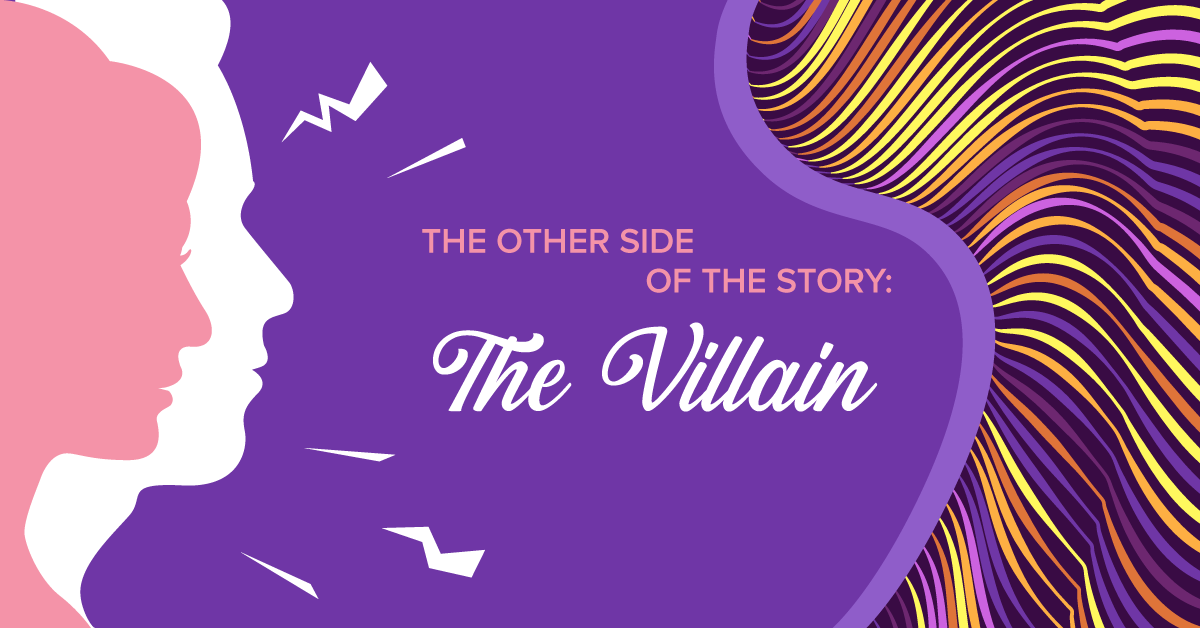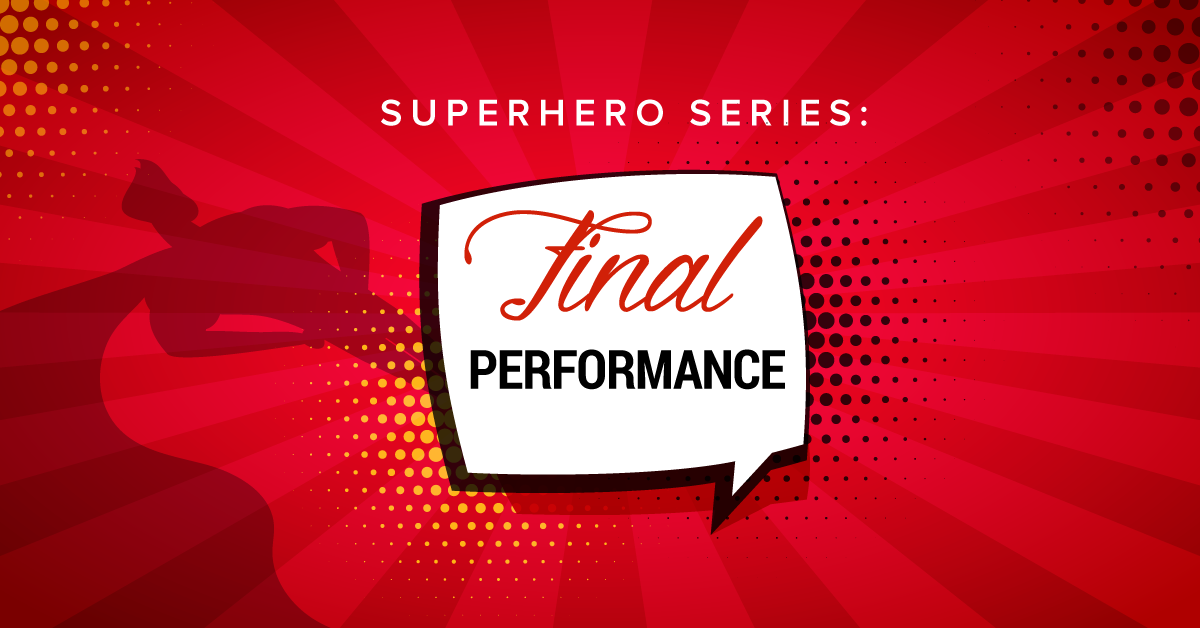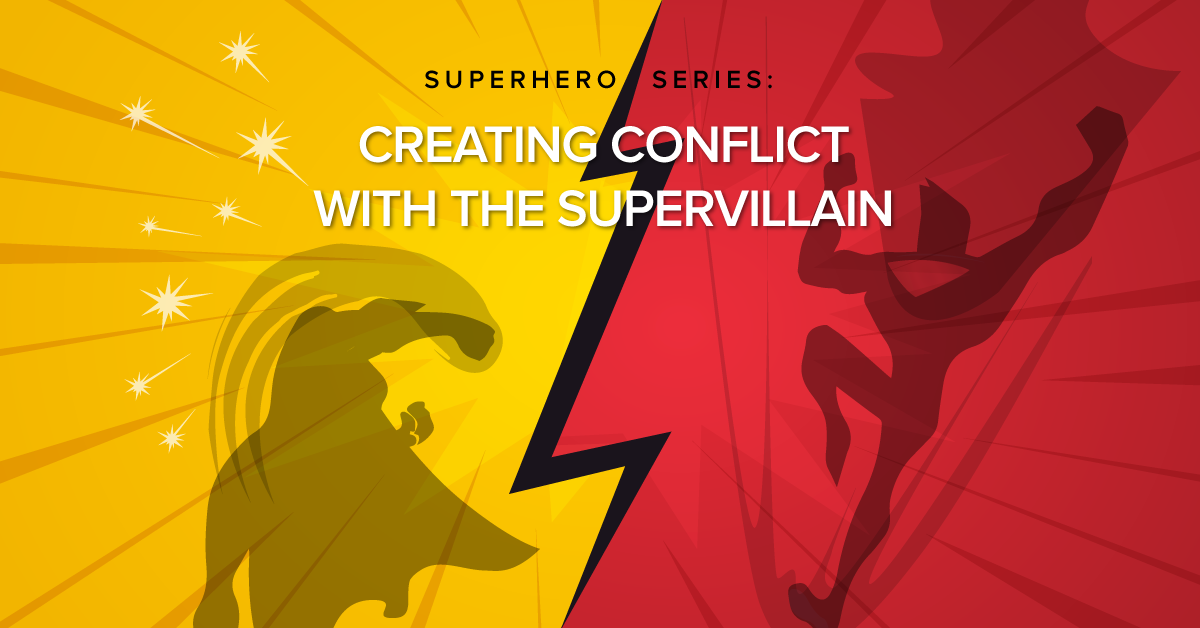There exists in everyone the potential for good or evil. Laramie Dean's adaptation of Dracula asks the question: How much would it take to bring out the darkness inside of you?
The Other Side of the Story: The Villain
Welcome to our second series of exercises for 2021: The Other Side of the Story! This series of exercises will focus on exploring, expanding, and creating new stories from the perspectives of different characters from books, television shows, films, plays, and other media. First up: Let’s explore those dastardly villains!
The hero of a story is written in a way that allows the audience to support and sympathize with them. But a story isn’t very interesting without a conflict, and that’s where the villain comes into play. The villain tries their best to thwart the hero at every turn, which makes audiences cheer for the hero even more. However, as we mentioned in our Villains article in the Superhero Series, in a villain’s mind, they are the hero of the story. They believe so strongly in their desire to achieve power that they feel their deceitful deeds are justified. So let’s put those villains in the spotlight and tell their stories.
As a class, brainstorm a list of famous fictional villains. (Fairy tales and Disney movies are a great place to start!) Some examples might include Jafar from Disney’s Aladdin, Lord Voldemort or Dolores Umbridge from the Harry Potter series, Miss Trunchbull from Matilda, the White Witch from the Narnia series, the Wicked Witch of the West from The Wizard of Oz, or Count Olaf from A Series of Unfortunate Events.
You may also wish to have students think about modern story adaptations that feature the villain as the main character, such as the musical Wicked, the movie Despicable Me, the Disney Descendants series of books and movies, or the Maleficent movies starring Angelina Jolie. How do the stories with the villain as the main character differ from stories featuring the hero as the main character?
Students may complete the following exercises individually, in pairs, or in small groups:
- Students will select a villain as their focus character.
- Students will fold a piece of paper in half, or using a computer, create a table with two columns.
- In the first column, they will write a list of all the bad things the villain did or said.
- In the second column, they’ll write the villain’s reason (in their minds) for doing or saying what they did.
- If students don’t know the reason, they can invent reasons that make sense for the character/story. Students don’t need to stick religiously to the existing story — encourage them to see where their creativity takes them!
Then, have students complete one or all of the following writing exercises:
1. Write a monologue in which the villain explains to the audience why they really aren’t the bad guy. For example, Ursula from Disney’s The Little Mermaid might say that she wasn’t to blame for all the troubles that happened, as she was only trying to help Ariel in her quest to win the heart of Prince Eric. (“Ariel should have read the contract more thoroughly, she chose to disobey her father, and how was I to know that King Triton didn’t know about this prince?”)
2. Write a monologue in which the villain defends their actions in front of a lawyer or judge, courtroom-style. Students might use similar phrases or reasons from the previous monologue, but the tone will likely be different — perhaps more defensive than conversational. You could even have students write both versions and compare how they would adjust certain words, phrases, tone of voice, or even how the villain might “alter” the story to serve their purposes.
3. Write an alternate scene to the story where the villain wins. How does the villain win? Where in the timeline of the story would the scene occur? How does that change the story? How can you dramatize the scene? For example, do you see the villain succeed onstage, does a narrator tell the story after the fact, is it told through a montage of action, or perhaps through song and dance?
From here, you can have students rehearse and read/perform the monologues or scenes in front of the rest of the class. If you wish, have them swap scenes with other students for a fresh interpretation. You could also put the monologues and scenes together to create your own classroom “twisted tale.” Have fun being bad!



